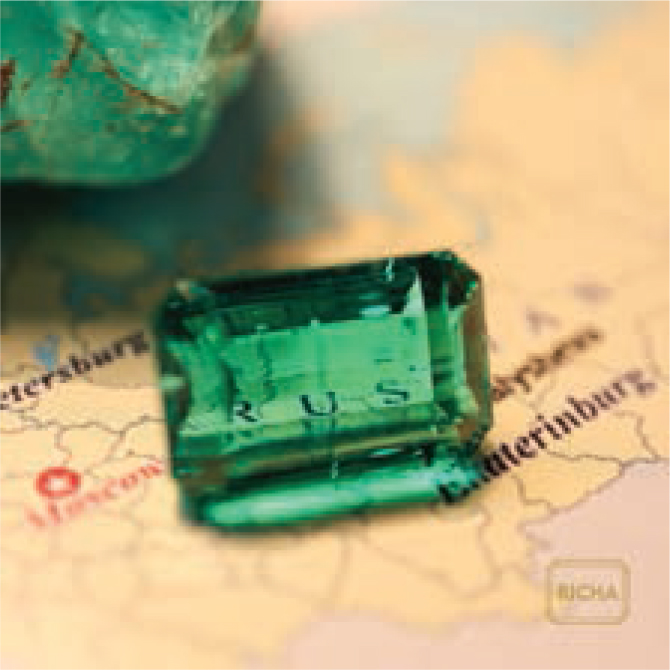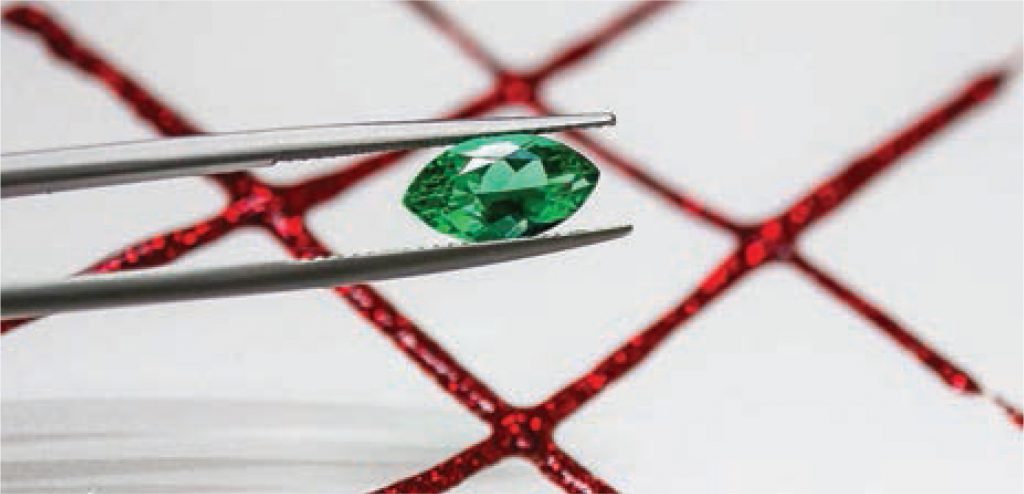Here’s a lowdown on Russian emeralds that glow from within and come in various shades of green.
Emeralds from Russia are today valued for their unique colour and their ‘lit from within’ glow. The pale hues of commercial quality Russian emeralds work well in large tumbled beads and cabochon cuts, complementing traditional Indian necklaces, and holding their green colour under dim lighting. These qualities have resulted in voracious Indian consumption of Russia’s mineral gift to the world


Formation: Geologists estimate Russian emeralds are approximately 255 million years old, with their formation connected to the Urals (the oldest mountains in the world). The Urals formed due to the collision of two protocontinents, absorbing the ancient sea that separated them. The resulting tectonic movement generated extreme heat and pressure, altering the rocks’ very nature (physical and chemical), creating emeralds. Similar geological events have formed emeralds in Zambia, Brazil, Ethiopia and Madagascar.
Colour: Russian emeralds come in various hues, with colours as rich as any other source. Their chemical composition is a key factor. While emeralds from multiple sources are all coloured by trace elements like chromium and vanadium, Russian emeralds additionally have less iron and more lithium than gemstones from Brazil, which contain more iron and less lithium.
On 11th December 1719, the Russian emperor, Peter the Great, created a department called Gokhran. The division’s objective was to take stock of Russia’s wealth, mineral resources, gem and jewellery collections accumulated through purchase or conquest. Over time, the entity started undertaking gem mining, processing ore and rough gems. The discovery of emeralds in Russia in 1830 led to the development (by Gokhran) of grading and training protocols for emeralds.
Cutters had to undergo seven different levels of training. They invested numerous years learning theoretical aspects related to the orientation, faceting and polishing, and invested long hours in practical training with gem material provided by the government. Each cutter had to clear monthly exams with strict passing criteria.
The Gokhran grading system has been in place for decades and is consistently followed across Russia and beyond. For example, if you send a stone to a gem lab in Russia, beyond the standard information, the lab will also specify the grade of the emerald as per the Russian formula.
Here’s how it works:
- Rough emeralds = 3 grades of clarity and colour.
- Faceted emeralds = 3 clarity grades + 5 colour grades.
- Cabochon emeralds = 2 clarity grades and 5 colour grades.
1 is the highest rating. A stone with a 1/3 would mean good colour, but poor clarity.

